The Floral Growing Season is REALLY Off and Running
When it rains, it pours. Figuratively, and literally.
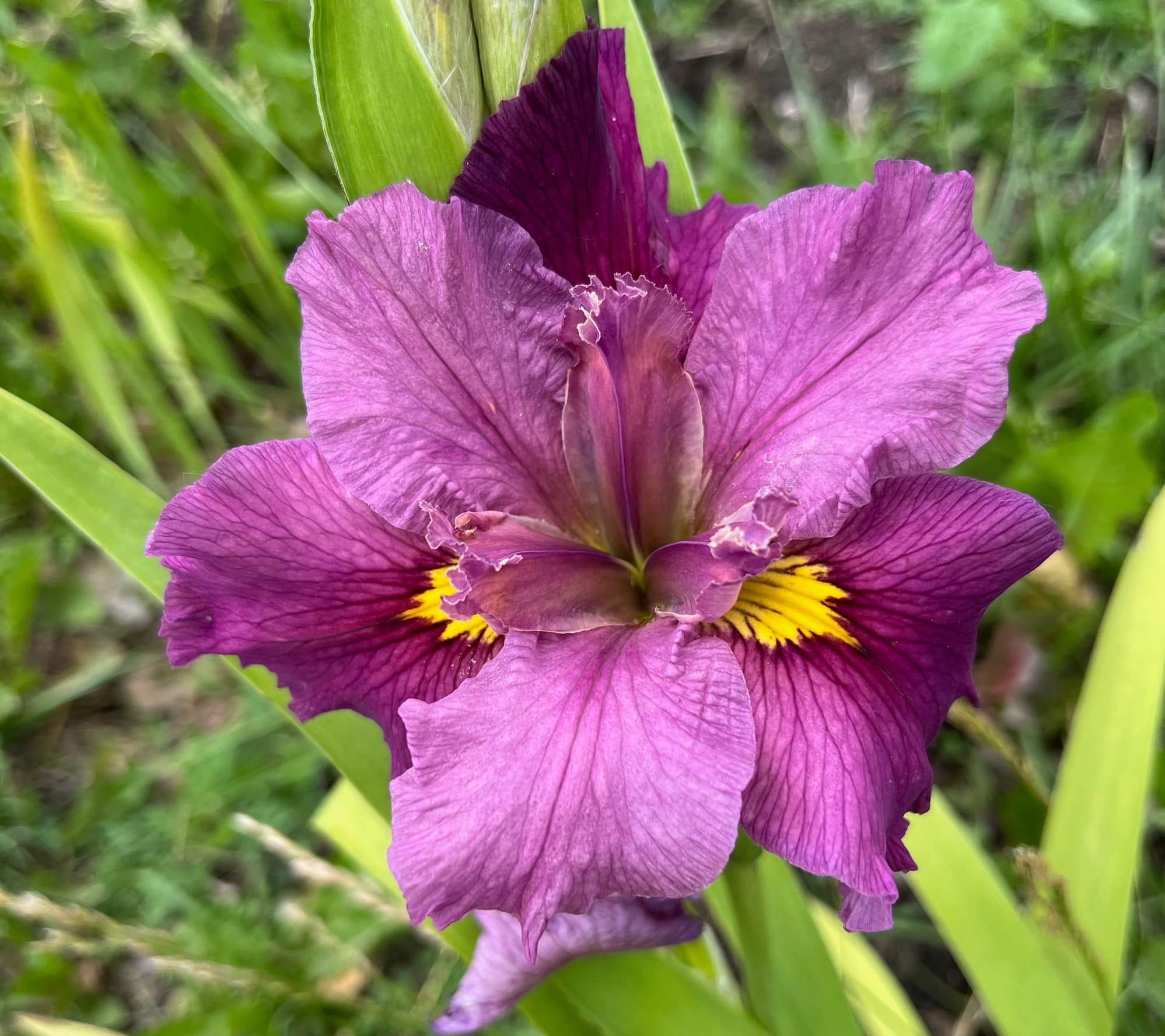
The problem with writing a gardening website is that it can feel like there is either nothing happening, or too much happening all at once to process.
The photo at the top is a Louisiana iris, something I wanted to see if I could get seeds from and hybridize. The jury is still out, but not looking great so far. I planted a couple varieties last year, and the biggest plant finally bloomed this year. I think this one is called Cyclamint. Louisiana irises grow great if you have spots in the garden where water tends to pool up, like near downspouts. Or near the edge of places like ponds and creeks. But during dry times, they do appreciate being watered.
When you're building a garden from scratch, of course you always want the first year to be interesting and exciting. Otherwise, you have to wait another year for all the fun. What I found in the second year was that many of the perennials I planted last year were fully established in the second year. Many bloomed this year, that didn't do anything last year. It was fun to finally see some of the flowering plants I was excited about last year, that I ended up missing because they needed more time to get going.
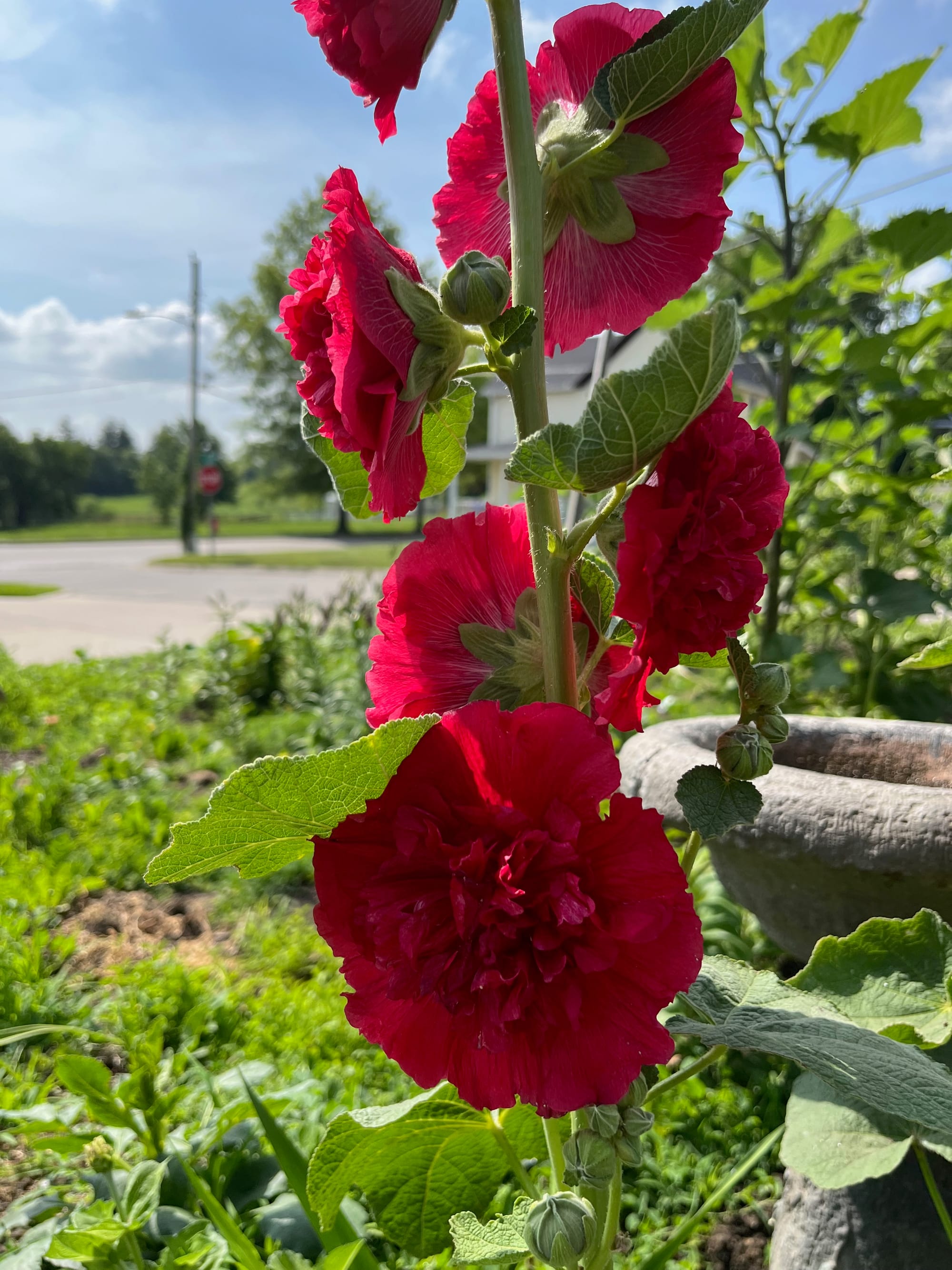
Last year, I found a bag of what looked like mixed color hollyhock "roots" at some place like Home Depot or Lowe's. I thought it would get me started with more established plants that were much more likely to bloom in the first year. Well, they didn't bloom the first year. I might as well have planted seeds of some very specific, unique varieties. (I sell a lot of these in my Etsy shop.) Every time I grow a hollyhock, I'm blown away by it. The roots sent up multiple plumes of double cardinal red flowers this year. Still very impressive and worth the wait. I will probably have a thousand seeds off this one plant. Enough double red hollyhock seeds to last a lifetime. In person, they really did look bright and bold enough to make people stop and double-take.
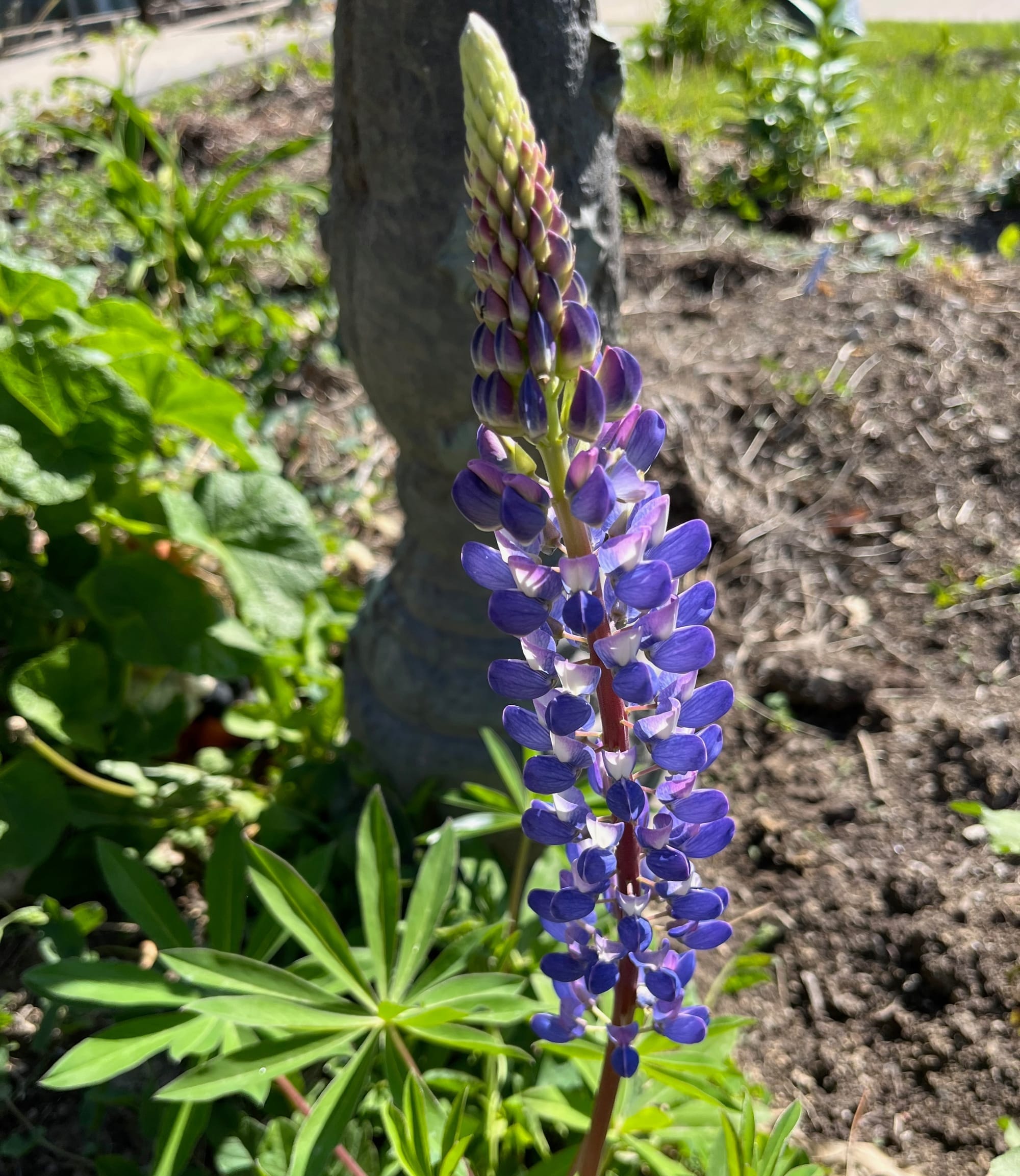
What really got the gardening season going this year were the blue lupines I planted from seeds last year, that looked very cool in the early spring this year. Unfortunately, there wasn't much else happening at the same time. Which brings me to a new problem.
One of the biggest challenges of flower gardening, and probably vegetable gardening, is timing things so that you have little downtime. You ideally want masses of blooms as early as possible, extending all the way into the late fall until the mums end with frost. I had a lot of weeks, and actually what ended up being 2-3 months of very little happening in the new garden. So my goal is to have a much earlier rollout next year by adding some "designer" type tall bearded irises (that I can have fun hybridizing), along with some unique tulips and daffodils. That will hopefully hold everything over in the garden until all the fun stuff starts blooming. I did add maybe 5 young "own root" roses gifted by a friend, and they also bloom fairly soon and keep going. The benefits to an own root rose is that the entire plant is that one variety. As most roses you buy at the store are a pretty rose grafted to a super hardy root stock rose, that's probably red. Eventually you might end up with some mundane, but very prolific, red roses once the pretty rose dies off the root stock.
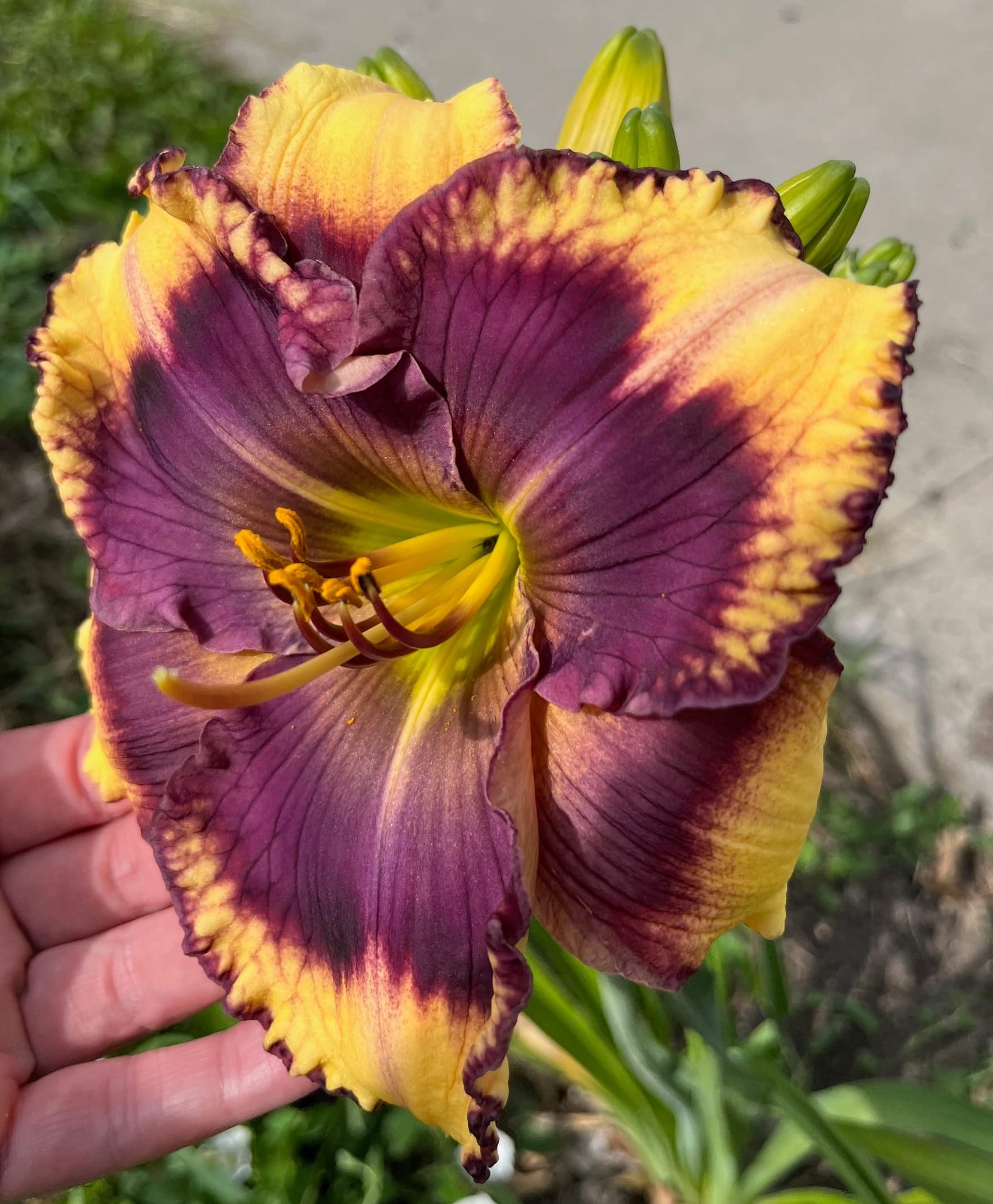
I am now in the middle of giant daylily season. And have been blown away by so many huge daylily blooms. Many did bloom the first year, but not nearly as spectacularly as the second year. If you haven't grown a giant daylily, I insist you try it. They are hard to kill and will make your neighbors envious. They are something to see in person. Photos do not do justice. You do have to do a bit of research and ask around for the biggest blooms a daylily seller might have in stock. You can even grow these from seeds. I was barely trying last year and got a bunch of seeds in my hybridizing attempts. I don't think there is an easier flower to hand pollenate.
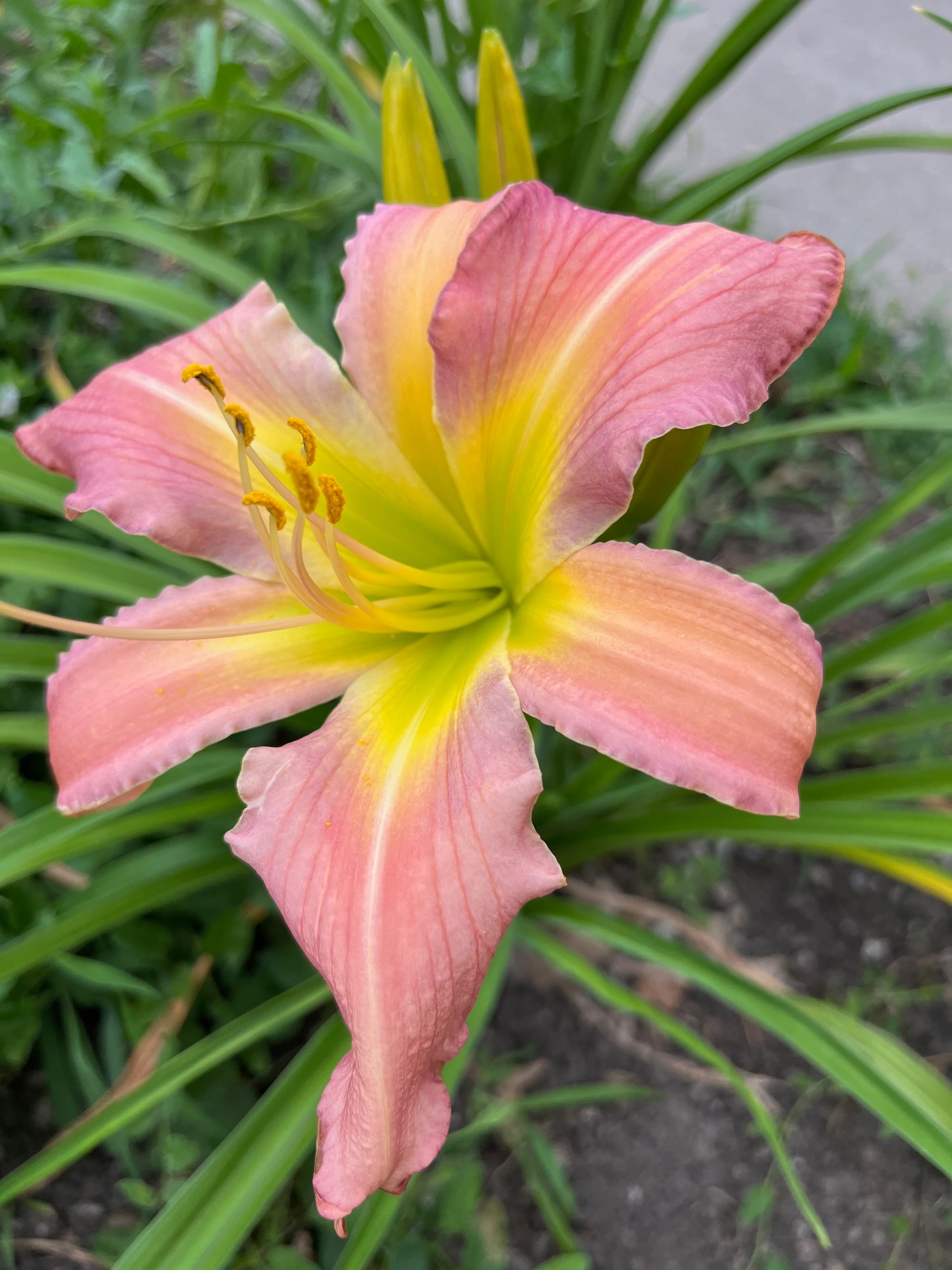
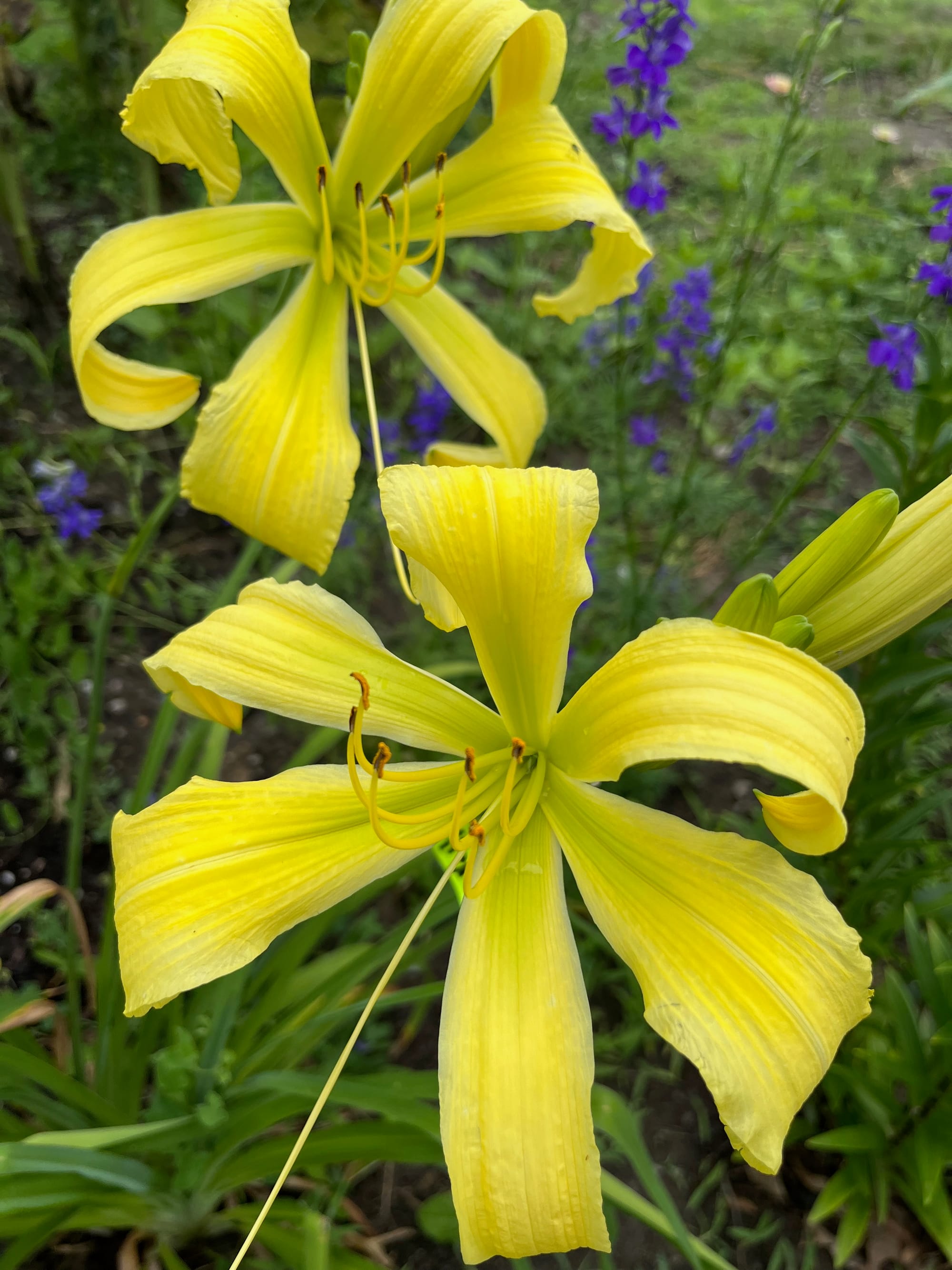

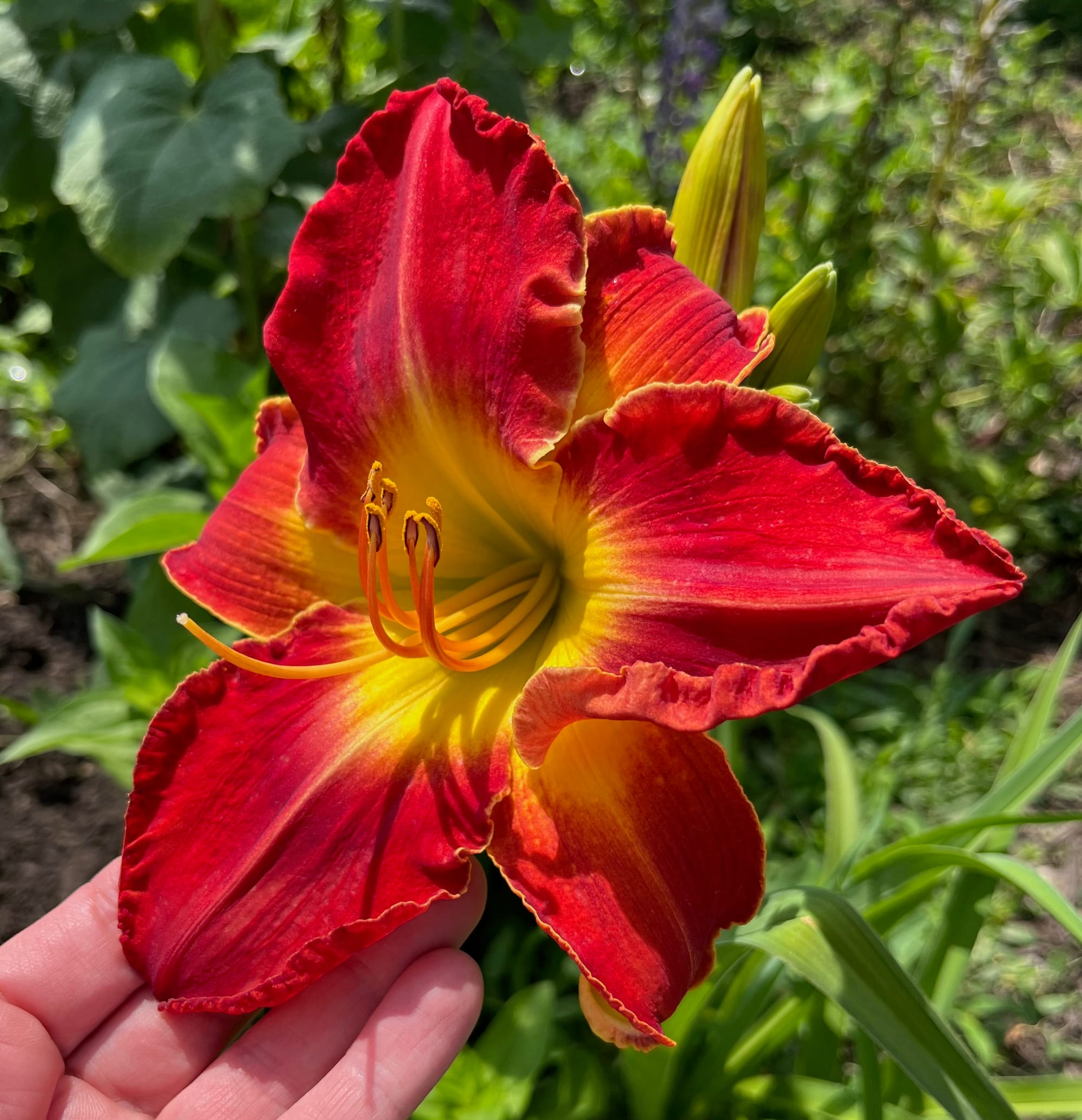
When I started buying daylilies, I wasn't particularly interested in the spider types. But many of the absolute biggest varieties are spiders. I was not prepared for how much I was going to love the giant yellow spider flowers, with that tropical banana coloration. For context, those yellow flowers are 8 - 10" across. You can probably see them from 2 blocks away. I was so enamored by them, that I crossed everything with yellow spider pollen. I wouldn't even mind if I had a huge mass of those. Of course, the main problem with daylilies is that each bloom only lasts a day. But you should get multiple blooms on a plant to keep it going longer. They are definitely worth a spot in your garden. The boring orange kinds you see all over the place can be invasive, so I don't really recommend those. These types are more controlled. And quite frankly, if they grew out of control I might feel like I'm in heaven!
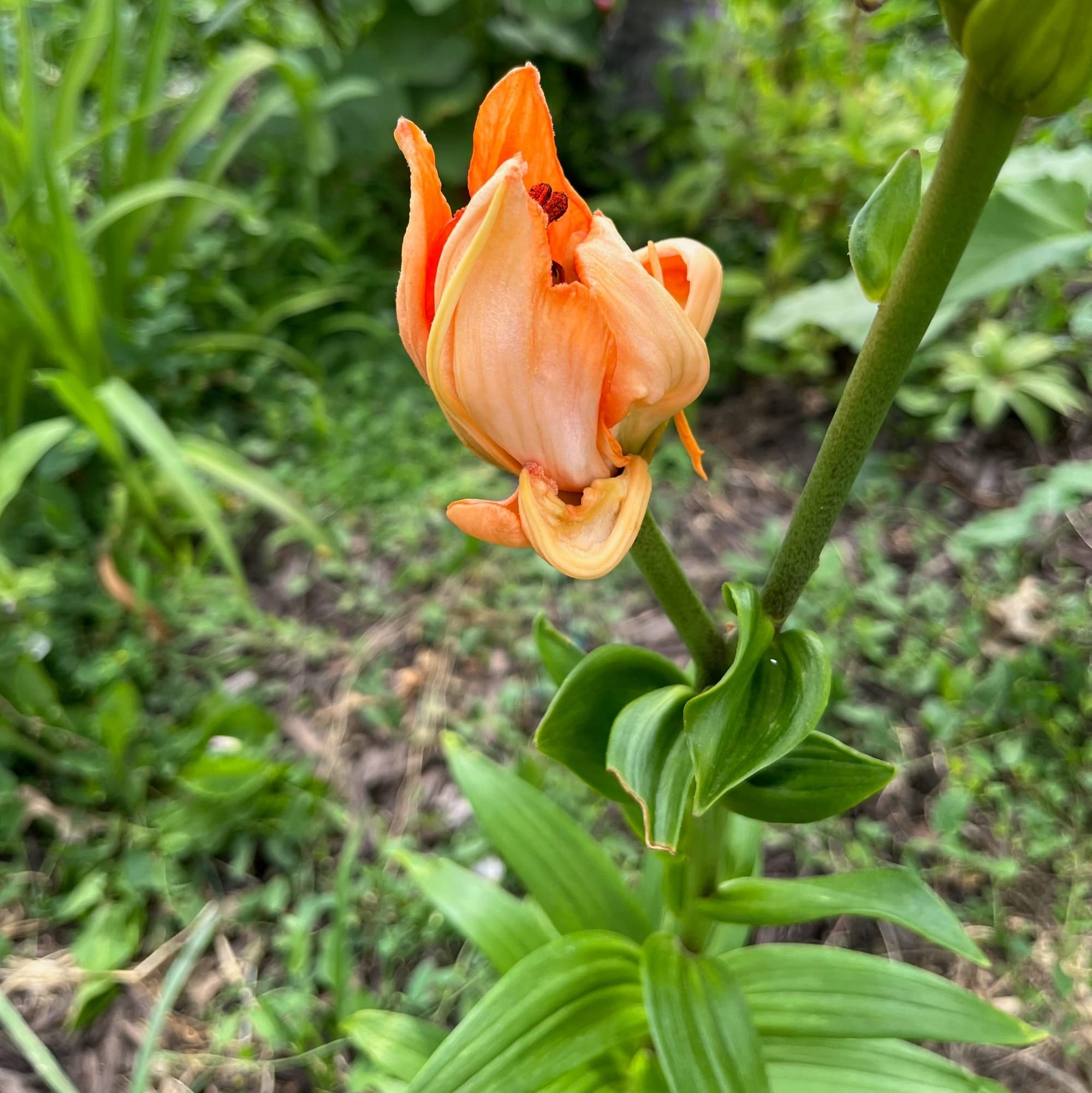
One thing I am growing, that I ordered for fun is the Tintoretto lily. They're supposed to look like a lily that looks like a tulip. I accidentally broke off the main flower branch while yanking out weeds, but the second branch bloomed. I tried self pollinating it, and added pollen to some other lilies to see if it would take. I wouldn't really recommend this unless you like oddball flowers. It feels more like a variety of lilies that doesn't quite open up all the way, than a tulip.

I planted a wide variety of black daylilies last year, of different sizes. Some regular size, and some huge. They do need to be planted up close or they might disappear into the background. Very dramatic looking flowers. I've been crossing back and forth between different black varieties, so I'll probably be planting a lot of seeds to get similar, or hopefully even darker, versions.
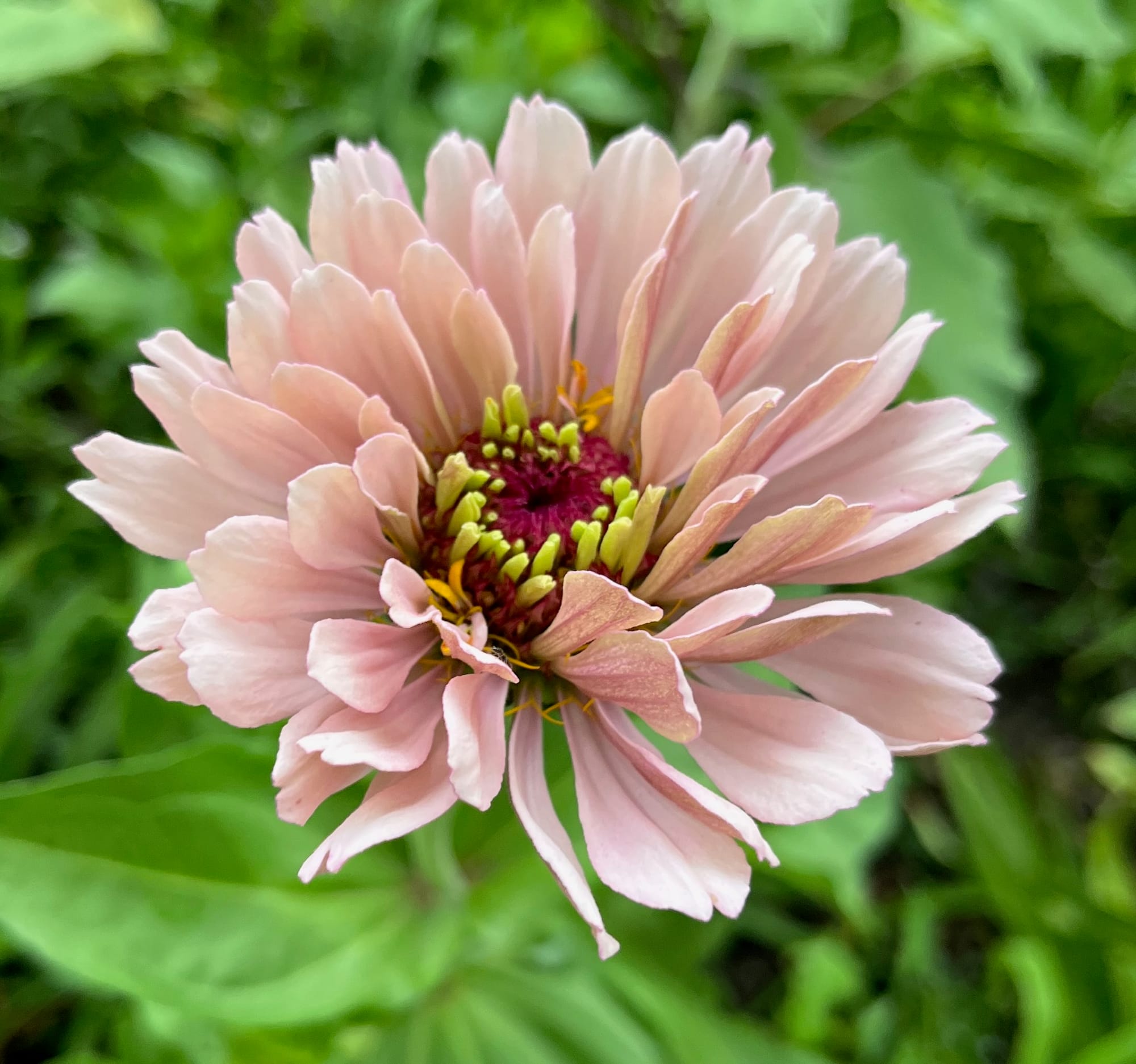
The zinnias are starting to bloom. I'm on a mission to bring back more purple cactus varieties. After discussing the color genetics with a friend who knows a lot more than me, we decided I should eliminate everything that isn't either purple, light purple, mixed purple and white, or white. Adding other colors can force out the expression of the purple. Of course I'm not actually getting rid of every zinnia that isn't that particular color. I will keep unique or interesting colors like the one above that is now opening, with sort of a beige, dusty rose color. It's more beige in person than it looks in the photo. I wanted to call it a "Café au Lait" zinnia, because it kind of reminds me of that creamed coffee, pale pink you can see with that dahlia variety. I'm not in love with the form of the petals so far, but we'll see how it does. Flowers that get this type of coloration often have a warm color and a cool color fighting each other. Like a lavender and a pink on the same bloom. Which can also lean towards one color or the other, or be fairly neutral in the beige range. I'm also thinking of Koko Loko Rose. Even on those plants, different blooms can move between those two opposing colors. You might see a bloom more in the apricot range, or one more in the lavender range. Hopefully you get lots of blooms in the middle, and it reminds you of coffee creamer.
Back to the headline of this article. Last year, I was battling never-ending rain. This year, it has been nearly a drought, unless it's raining cats and dogs. However, this year has been much better in terms of growing things like dahlias. They don't like a lot of rain. Probably 95% of my dahlia tubers are growing plants this year. As compared to last year, when maybe 8% were growing. As a precaution, I planted my dahlia tubers in mounds just in case. I think it's helpful in case we do get an onslaught of too much rain. I will probably keep doing that going forward as long as I'm in this climate.
One last photo is a canna plant I saw at the local university. I'm keeping my eye out for seeds on these! I think they might be a "fantasy" canna.
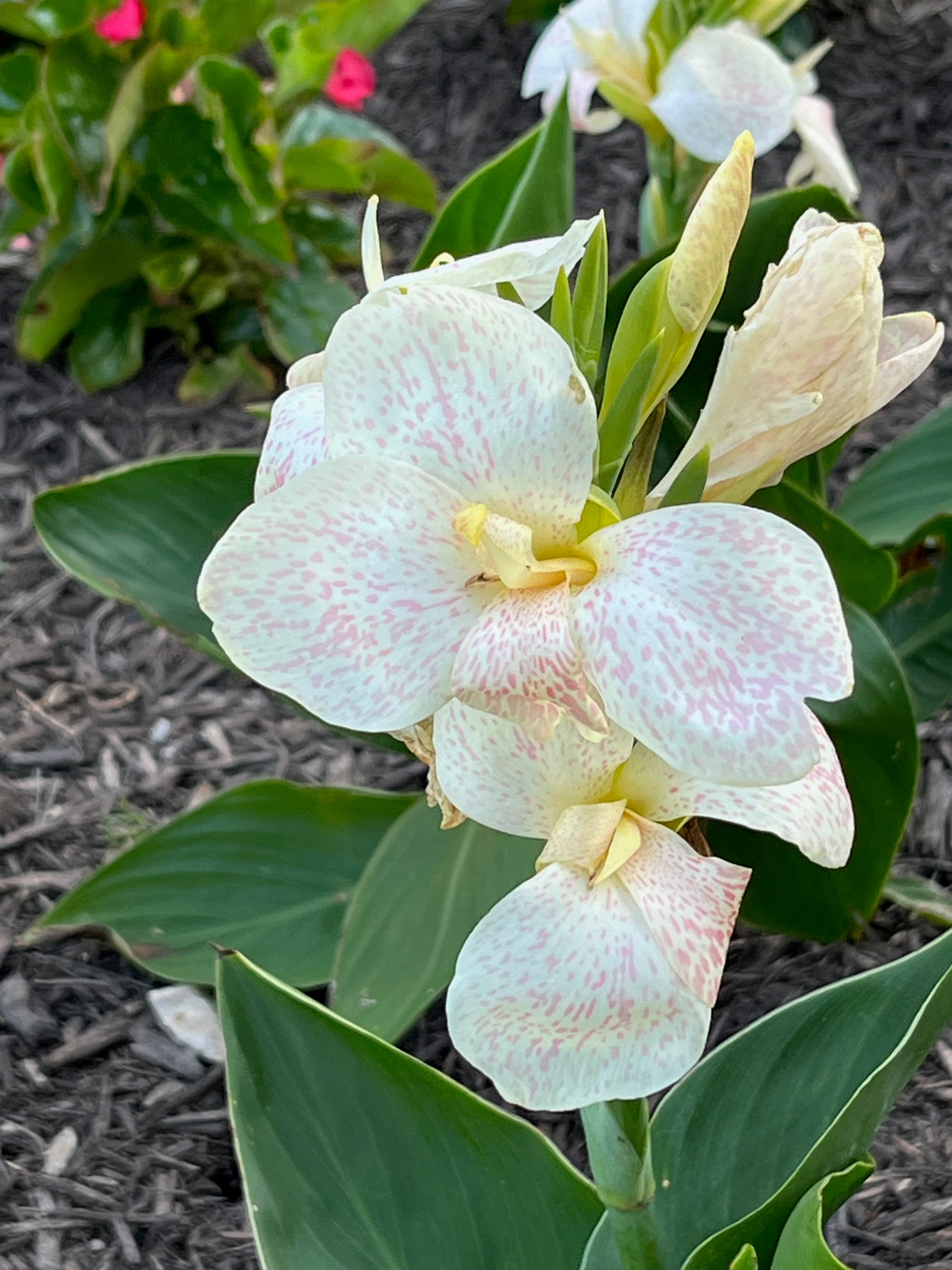
© Copyright Terry Aley
The Aley Acres seed shop on Etsy.
Dahlias, Notes from a Gardener book on Amazon.
Floral Art and Landscape Painting Etsy shop.
TikTok, some gardening posts.
